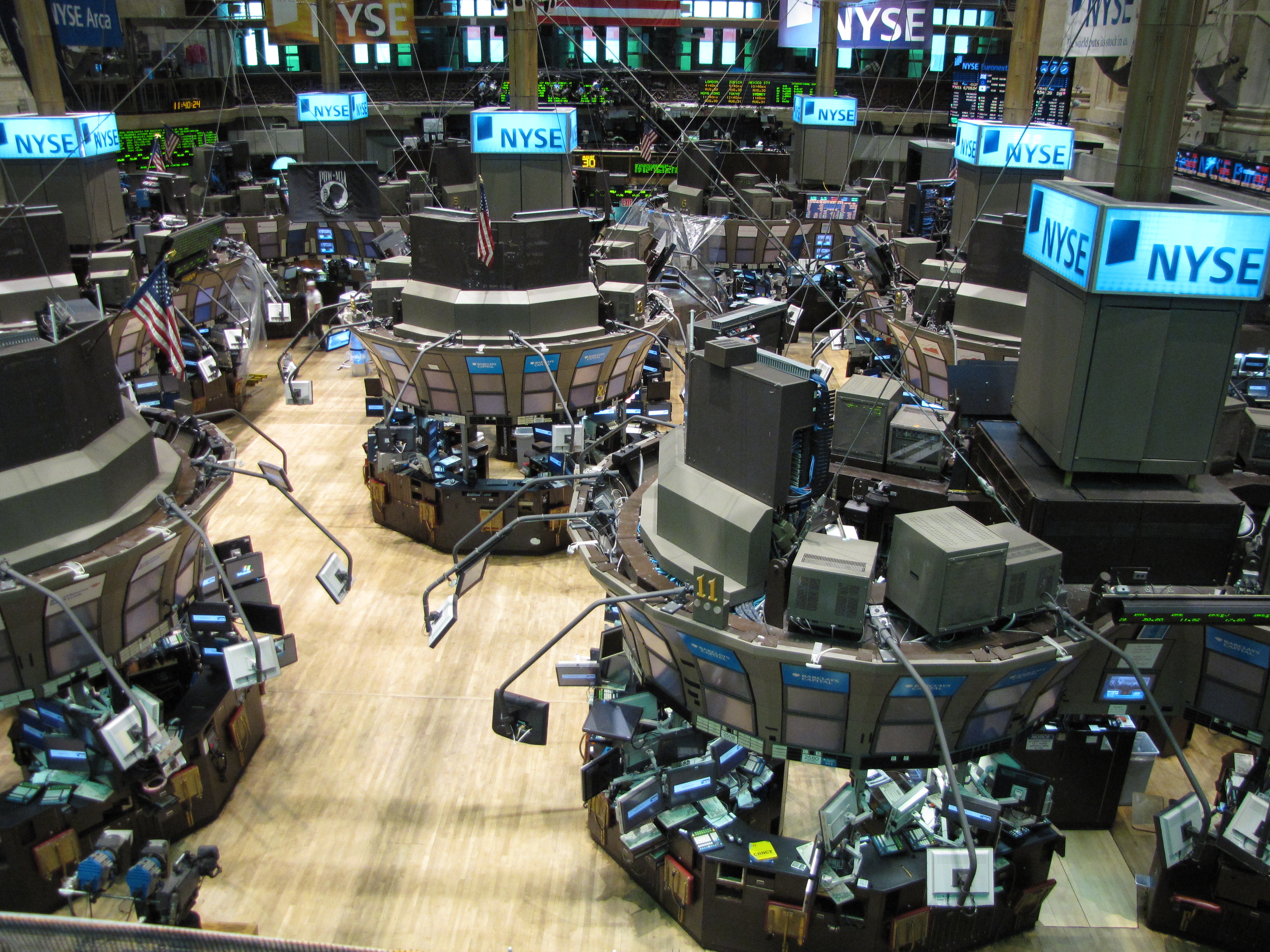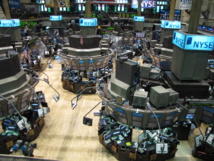Slowing economic growth in China and investment-driven supplies during the commodity boom in the aughts reduced prices to multi-year lows.
Hardly we can expect recovery in prices to highs of last hundred years. A number of major asset classes could even reach the bottom, as experts predict a slight improvement in 2016.
Energy
Energy prices are likely to remain low. Although, there still remains some hope for a rise in oil prices in the second half of the year if OPEC keeps production at the highest level and small companies, such as shale US producers, reduce production.
Forecasts for the oil change very dramatically. For example, Goldman Sachs sets $ 20 a barrel for Brent. At the same time, most of the others are more optimistic, predicting a change in the supply-demand balance by the end of 2016.
Moody's sets the price for Brent crude oil at $ 43 a barrel, and WTI - at $ 40. Analysts at Societe Generale expect prices to rebound to $ 60 in the IV quarter of 2016.
WTI and Brent fell more than 40% this year and are now at the level of about $ 37 per barrel. The natural gas prices also marked a resurgence in recent years. They moved away from 17-year lows in 2012 because of unexpectedly cold weather forecasts, boosted demand for this type of fuel.
Yet, given that the market is moving to higher prices triggered by low temperature weather, investors should reduce rates to 2012-lows, so that the "bull" market would be steady.
Iron Ore
Reduced economic growth in the world's largest consumer country, China, hits hard domestic real estate market, and stocks of steel. Most likely, this will continue to raise the price of iron ore, which went down to the mark of about $ 40 now from almost $ 70 in January last year.
National Australia Bank, UBS and Westpac are pessimistic about steelmaking raw materials market, which is likely to remain fairly depressed. In turn, it may hit the Australian economy and currency.
Precious Metals
The price of gold and silver collapsed by about 10% in 2015 due to expectations of higher interest rates by the US Federal Reserve, which raised rates for the first time since 2006 earlier.
As a result of the interest rate increase, precious metals have become less attractive for investment, since they are earning assets, requiring specific storage costs. So the more rates will raise next year, the greater the pressure will be exerted on the price of gold and exchange-traded funds.
Analysts expect that the Fed will raise the rate by another 100 basis points, or 1%, so in 2016, the price of gold will test the level of $ 1 th. per ounce in the I quarter of 2016.
Copper
Last year was tumultuous for the red metal, as the prices crashed by more than 20%. However, analysts at London's Capital Economics say that prices may rise, in spite of the persistent problems.
The analysts are so optimistic due to the belief that the Chinese economy will avoid a hard decline along with the rise in the economy and expectations of reduced supplies in 2016 in the US.
"We stick to cautious optimism, because there are all conditions for recovering copper prices along with reduced supply and increased demand. Now the constant concerns about China's economic growth and the Fed increasing the rate affect mood of investors. However, we believe that these fears are exaggerated and prices can be expected to raise over the next year", - analysts say.
Capital Economics analysts predict that copper will reach $ 6 th. per ton by the end of 2016 compared to the level of $ 4,750 per ton at the moment.
Grains
"Despite concerns about the weather phenomena El Niño and La Niña, we can hardly expect lower prices for grains, as producers currently maintain high stocks of these cultures," - said the head of UBS Wealth Management, and Asia-Pacific forex Dominik Schneider.
"In general, there is a tendency to raise prices, but grain stocks are enough so that we will cope with any short-term weather events", - the expert believes.
Although there is a possibility that El Niño, which resulted in the observed warming of the weather, may hit crops of grain, global grain stocks are now abundant. This situation arises partly because of agricultural technological achievements, such as genetically modified crops.
If El Niño is followed by La Niña (cooling phase), grain prices in the long term may be reduced due to the negative impact on the United States, the largest producer.
However, this prospect is already too distant future to make any predictions, said Schneider.
based on Bloomberg materials
Hardly we can expect recovery in prices to highs of last hundred years. A number of major asset classes could even reach the bottom, as experts predict a slight improvement in 2016.
Energy
Energy prices are likely to remain low. Although, there still remains some hope for a rise in oil prices in the second half of the year if OPEC keeps production at the highest level and small companies, such as shale US producers, reduce production.
Forecasts for the oil change very dramatically. For example, Goldman Sachs sets $ 20 a barrel for Brent. At the same time, most of the others are more optimistic, predicting a change in the supply-demand balance by the end of 2016.
Moody's sets the price for Brent crude oil at $ 43 a barrel, and WTI - at $ 40. Analysts at Societe Generale expect prices to rebound to $ 60 in the IV quarter of 2016.
WTI and Brent fell more than 40% this year and are now at the level of about $ 37 per barrel. The natural gas prices also marked a resurgence in recent years. They moved away from 17-year lows in 2012 because of unexpectedly cold weather forecasts, boosted demand for this type of fuel.
Yet, given that the market is moving to higher prices triggered by low temperature weather, investors should reduce rates to 2012-lows, so that the "bull" market would be steady.
Iron Ore
Reduced economic growth in the world's largest consumer country, China, hits hard domestic real estate market, and stocks of steel. Most likely, this will continue to raise the price of iron ore, which went down to the mark of about $ 40 now from almost $ 70 in January last year.
National Australia Bank, UBS and Westpac are pessimistic about steelmaking raw materials market, which is likely to remain fairly depressed. In turn, it may hit the Australian economy and currency.
Precious Metals
The price of gold and silver collapsed by about 10% in 2015 due to expectations of higher interest rates by the US Federal Reserve, which raised rates for the first time since 2006 earlier.
As a result of the interest rate increase, precious metals have become less attractive for investment, since they are earning assets, requiring specific storage costs. So the more rates will raise next year, the greater the pressure will be exerted on the price of gold and exchange-traded funds.
Analysts expect that the Fed will raise the rate by another 100 basis points, or 1%, so in 2016, the price of gold will test the level of $ 1 th. per ounce in the I quarter of 2016.
Copper
Last year was tumultuous for the red metal, as the prices crashed by more than 20%. However, analysts at London's Capital Economics say that prices may rise, in spite of the persistent problems.
The analysts are so optimistic due to the belief that the Chinese economy will avoid a hard decline along with the rise in the economy and expectations of reduced supplies in 2016 in the US.
"We stick to cautious optimism, because there are all conditions for recovering copper prices along with reduced supply and increased demand. Now the constant concerns about China's economic growth and the Fed increasing the rate affect mood of investors. However, we believe that these fears are exaggerated and prices can be expected to raise over the next year", - analysts say.
Capital Economics analysts predict that copper will reach $ 6 th. per ton by the end of 2016 compared to the level of $ 4,750 per ton at the moment.
Grains
"Despite concerns about the weather phenomena El Niño and La Niña, we can hardly expect lower prices for grains, as producers currently maintain high stocks of these cultures," - said the head of UBS Wealth Management, and Asia-Pacific forex Dominik Schneider.
"In general, there is a tendency to raise prices, but grain stocks are enough so that we will cope with any short-term weather events", - the expert believes.
Although there is a possibility that El Niño, which resulted in the observed warming of the weather, may hit crops of grain, global grain stocks are now abundant. This situation arises partly because of agricultural technological achievements, such as genetically modified crops.
If El Niño is followed by La Niña (cooling phase), grain prices in the long term may be reduced due to the negative impact on the United States, the largest producer.
However, this prospect is already too distant future to make any predictions, said Schneider.
based on Bloomberg materials



















